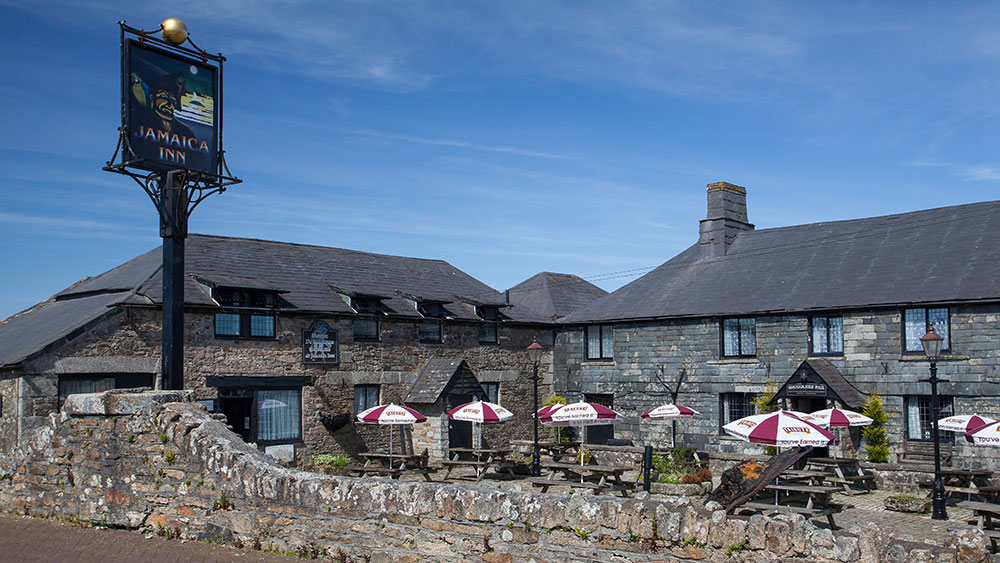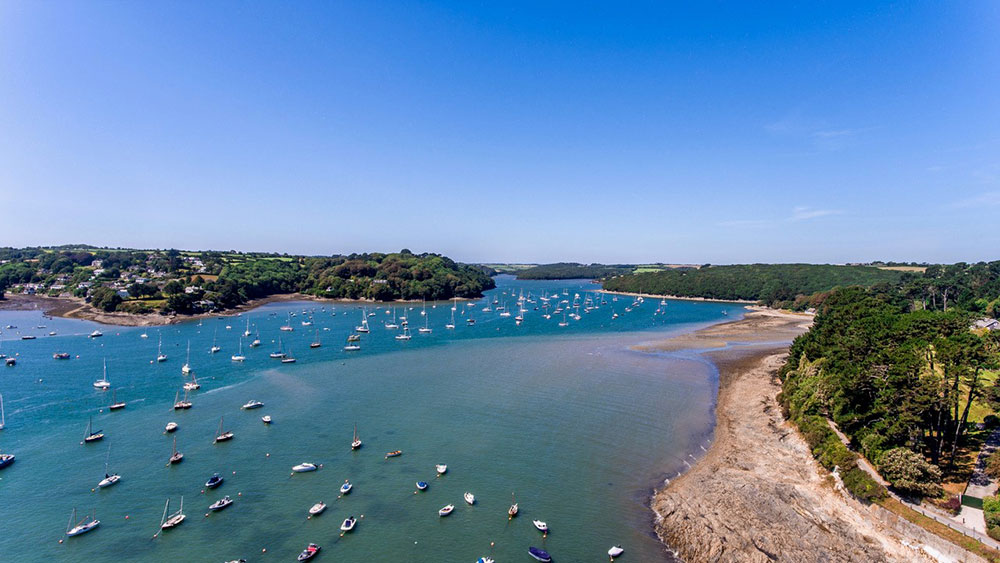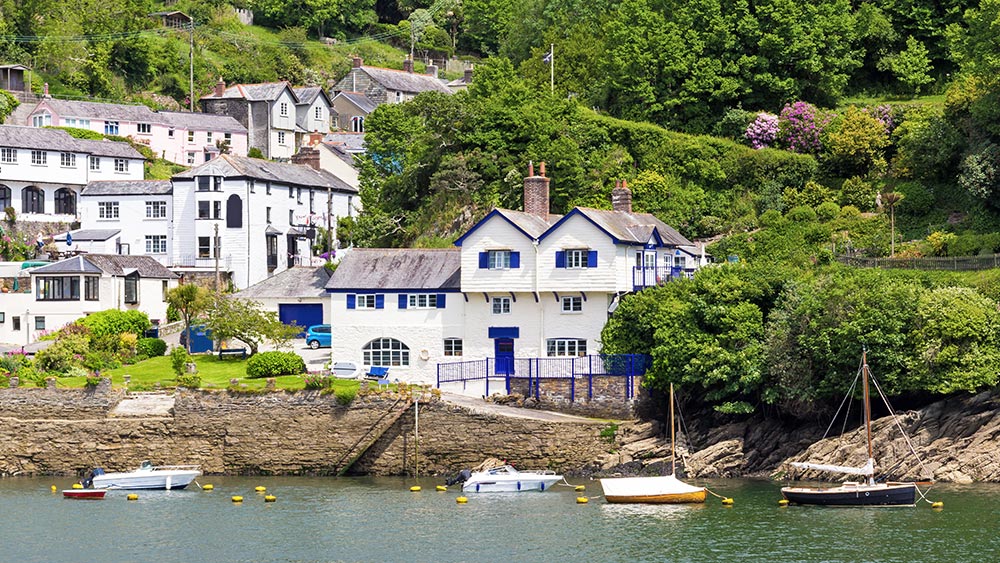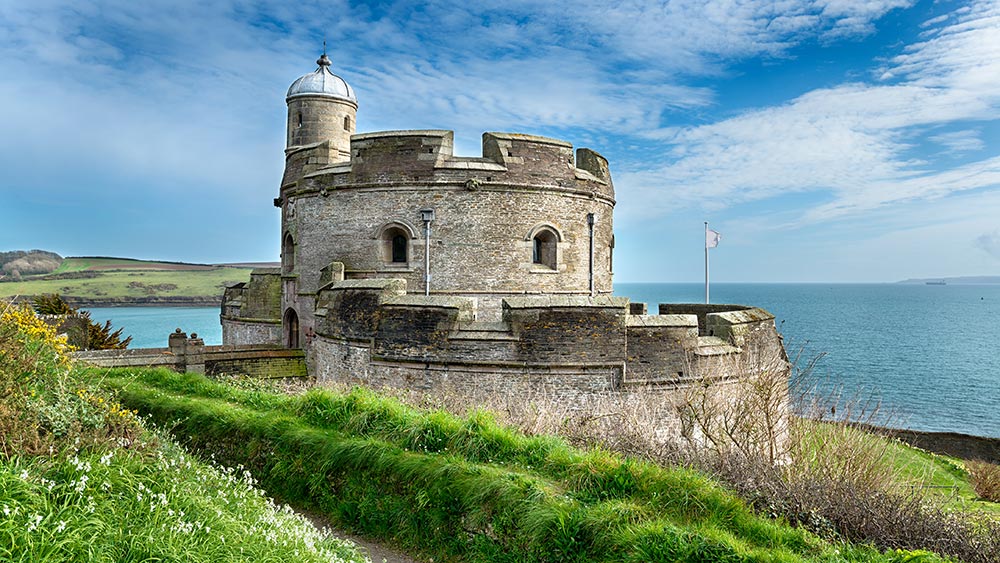Discovering Daphne du Maurier’s Cornwall
Daphne du Maurier’s Cornish Footsteps
She’s Cornwall’s most celebrated author, a doyen of romance and noir, her words encapsulating some of the county’s most evocative settings, from the brooding uplands of Bodmin Moor to the gentle backwaters of the Helford River.
Dame Daphne du Maurier’s Cornish legacy holds no bounds. Her most famous novels have never been out of print, and many have been adapted for the big screen, including the psychological thriller ‘Rebecca’, first directed by Alfred Hitchcock in 1940 and recently remade for Netflix starring Lily James, Armie Hammer and Kristin Scott Thomas.
To coincide with the release of this latest dramatisation, we’ve put together a tour of Daphne du Maurier’s Cornwall, a chance to discover the inspiration behind her most captivating passages…
Jamaica Inn, Bolventor, Bodmin Moor
This historic staging post on Bodmin Moor became both title and setting for Daphne du Maurier’s dark and brooding tale about a gang of murderous wreckers. She sought respite at the inn after losing her way while out horse riding, a fraught and fearful ordeal that proved vital in her descriptions of the bleak and windswept moorland. Set in the 1800s, her novel Jamaica Inn tells the story of orphan Mary Yellan, who is sent to live with her Aunt Patience and becomes ensnared by the nefarious Joss Merlyn, a man who harbours dark secrets and rules with an iron fist. As the mystery of the inn unfolds, Mary is confronted by perilous truths and forced to fight for her survival in a world misshaped by barbarity and greed.
First published in 1936, the book was quickly adapted into a film directed by Alfred Hitchcock but failed to live up to du Maurier’s brilliance. People still travel from far and wide to visit “Cornwall’s most famous smuggling inn”, an important part of the du Maurier legacy.

Frenchman’s Creek, on the Helford River
The tranquil backwaters of the Helford River provide the setting for one of du Maurier’s great love stories. Named after the enchanting inlet known locally as Frenchman’s Creek, the tale tells of Lady Dona St. Columb, who, having grown tried of the banalities of high society, escapes to her husband’s remote Cornish estate. It’s here that she encounters outlaw and pirate Jean-Benoit Aubéry and a newfound passion ignites away from the glare of her priggish husband. This swashbuckling, romantic adventure, set during the reign of Charles II, is considered one of du Maurier’s best period novels. You can discover the creek by boat tour or enjoy a gentle stroll along its leafy banks. The Helford River lies not far from the stunning Lizard Peninsula, renowned for its golden sandy shores and scintillating clifftop paths, the perfect setting for your own romantic escape.

Menabilly, on the Gribben Peninsula.
One of Daphne du Maurier’s most famous haunts, the historic grounds of the Menabilly estate served as the inspiration for her most celebrated novel, Rebecca. Within the book, Menabilly becomes Manderlay, owned by widower George Fortescue Maximilian “Maxim” de Winter and the setting for her gothic classic. On their return from the French Riviera, his newly-wed soon realises that her husband remains haunted by the memory of his dead wife Rebecca, and his house now exists as a mausoleum in the care of his sinister housekeeper, Mrs Danvers.
Daphne found Menabilly in a serious state of disrepair and devoted much of her time to its restoration. Shortly after setting up residence, she wrote The King’s General, set during the English Civil War, its plot believed to have been kindled by the discovery of the skeleton of a king’s cavalier during the house renovations. Menabilly is surrounded by several beautiful walks, many of which pick up and follow the ancient coastal path to Gribben Head where Daphne once strolled.
Polridmouth Cove, Menabilly, near Fowey
This secluded, sandy cove can be discovered at low tide and lies west of the port town of Fowey and east of Gribben Head, found by way of the coastal path. A sheltered inlet backed by farmers’ fields, the cove is captured in du Maurier’s novel Rebecca as the ominous setting for the boathouse. It’s also the place where Rebecca’s wrecked sailing boat is discovered – the remains of her body inside.
The cove is described in chapter ten of the book which culminates when the narrator enters the boathouse only to be overwhelmed by its “oppressive” atmosphere which provokes a hasty retreat. Pronounced “Pridmouth” Cove, this stunning location remains a much-loved pilgrimage for all du Maurier aficionados.
The riverside village of Bodinnick
Often described as the “heart of du Maurier country”, Bodinnick is an idyllic fishing village set on the banks of the Fowey River. It’s home to ‘Ferryside’, Daphne du Maurier’s family house and the place where she penned many of her novels, including her debut book The Loving Spirit, a family saga spanning four generations. Perched on the water’s edge, the house and quay remain part of the family estate, recently receiving Grade II listed status in recognition of its close links to Daphne and its unique maritime heritage. Across the sun-dappled banks lies the historic port town of Fowey, a charming waterside community home to some of Toad Hall’s most sought-after holiday cottages.

Penhallow Manor, Altarnun, nr Launceston
This elegant Grade II Listed house, set in one of the prettiest villages on Bodmin Moor, appears in du Maurier’s iconic novel Jamaica Inn as the vicarage, home to Frances Davey, vicar of Altarnun. Davey is considered one of du Maurier’s most supernatural characters, almost vampiric in his countenance. The novel’s heroine, Mary Yellan, is befriended by the vicar, whose curious nature unravels into something far more foreboding. Adjacent to the manor stands St Nonna’s Church, known as ‘the Cathedral of the Moor’, which also features in the novel, the place where the deceitful vicar preaches to his congregation. Daphne and her friend Foy Quiller-Couch are believed to have visited the church and met with the parish vicar. The conversation was no doubt highly convivial, however the seeds were sown for one of du Maurier’s most ghoulish characters.
Pendennis Castle, Falmouth
Built by Henry VIII to help protect Falmouth Bay from marauders, Pendennis Castle stands upon a rocky cape overlooking Falmouth Harbour. The castle features in The King’s General, du Maurier’s tenth novel, a Cavalier romance set during the English Civil War. Other historic Cornish locations to feature in the book are Launceston Castle and Lanhydrock.

Tywardreath, St Austell Bay
The hilltop village of Tywardreath lies to the west of the riverside parish of Fowey. Its name translates from Cornish to “House on the Strand”, the title of Daphne du Maurier’s supernatural novel about time travel published in 1969. At the time of writing, Daphne was living close to the village in a house called Kilmarth, which also features in the book and is where she would spend her final years.
Come and follow the world-famous Daphne du Maurier trail when you book a stay with Toad Hall Cottages.
